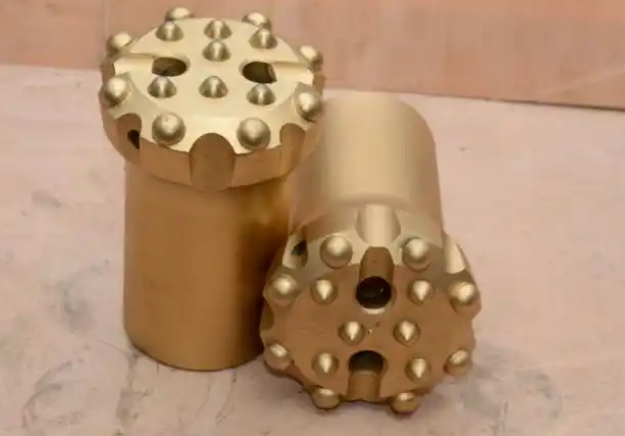Call us 0597-3217790
E-mall fujiankailong@gmail.com
Longyan Kailong Mining Equipment Co., Ltd.
Down-the-hole drill bits and ordinary drill bits exhibit significant differences in various aspects. The following is a detailed summary of these distinctions:
Down-the-Hole Drill Bits:
Often adopt an eccentric design, where the drill bit positioning ring is eccentric to the drill bit, enabling the drill hole to be positioned outside the centerline of the drilling during operation. This design helps to enlarge the hole diameter, both laterally and longitudinally.
The end face shapes vary, including convex, flat, concave, and deeply concave center types, to adapt to different hardness and abrasiveness of rocks.
Ordinary Drill Bits:
Have a relatively simple design without an eccentric structure.
Primarily rely on the rotation of the drill bit and the cutting action of the cutting edges to break the rock or material.

Down-the-Hole Drill Bits:
Are typically used in conjunction with an impactor, utilizing the high-frequency impact force generated by the impactor to break the rock.
Simultaneously cooperate with the rotational motion of the drilling machine for drilling, achieving a combined impact and rotary working mode.
Ordinary Drill Bits:
Primarily rely on the rotational power of the drilling machine and the cutting action of the cutting edges to drill holes.
Down-the-Hole Drill Bits:
Are suitable for drilling operations in rocks and various types of formations, especially in situations where it is necessary to enlarge the hole diameter or avoid drilling jams.
Often used in rock drilling operations in urban construction, railways, highways, rivers, and other engineering projects.
Ordinary Drill Bits:
Are suitable for processing general materials such as wood, plastic, and metal.
In rock drilling, they are typically used in softer or medium-hard rocks.
Down-the-Hole Drill Bits:
Due to their eccentric design and impact breaking method, they can effectively improve drilling efficiency, reduce drilling jams, and lower operating costs.
Have good wear resistance and impact resistance to ensure long-term use effectiveness.
Ordinary Drill Bits:
Drilling efficiency is greatly affected by rock hardness and drill bit material. In hard rock, drilling efficiency is relatively low.
Durability is influenced by material and processing conditions. Reasonable use and maintenance can extend their service life.
Down-the-Hole Drill Bits:
Have obvious advantages in enlarging the hole diameter, both laterally and longitudinally.
Certain types of down-the-hole drill bits (such as concave types) can maintain good centering performance, ensuring good straightness of the drilled blast holes.
Ordinary Drill Bits:
Typically have higher drilling accuracy, suitable for situations requiring high drilling accuracy.
Have limited ability to enlarge the hole diameter, especially in hard rock.
In summary, down-the-hole drill bits and ordinary drill bits differ significantly in design and construction, working principles, application scenarios, efficiency and performance, as well as drilling accuracy and hole diameter enlargement capabilities. When selecting and using them, comprehensive consideration should be given based on specific needs and operating conditions.